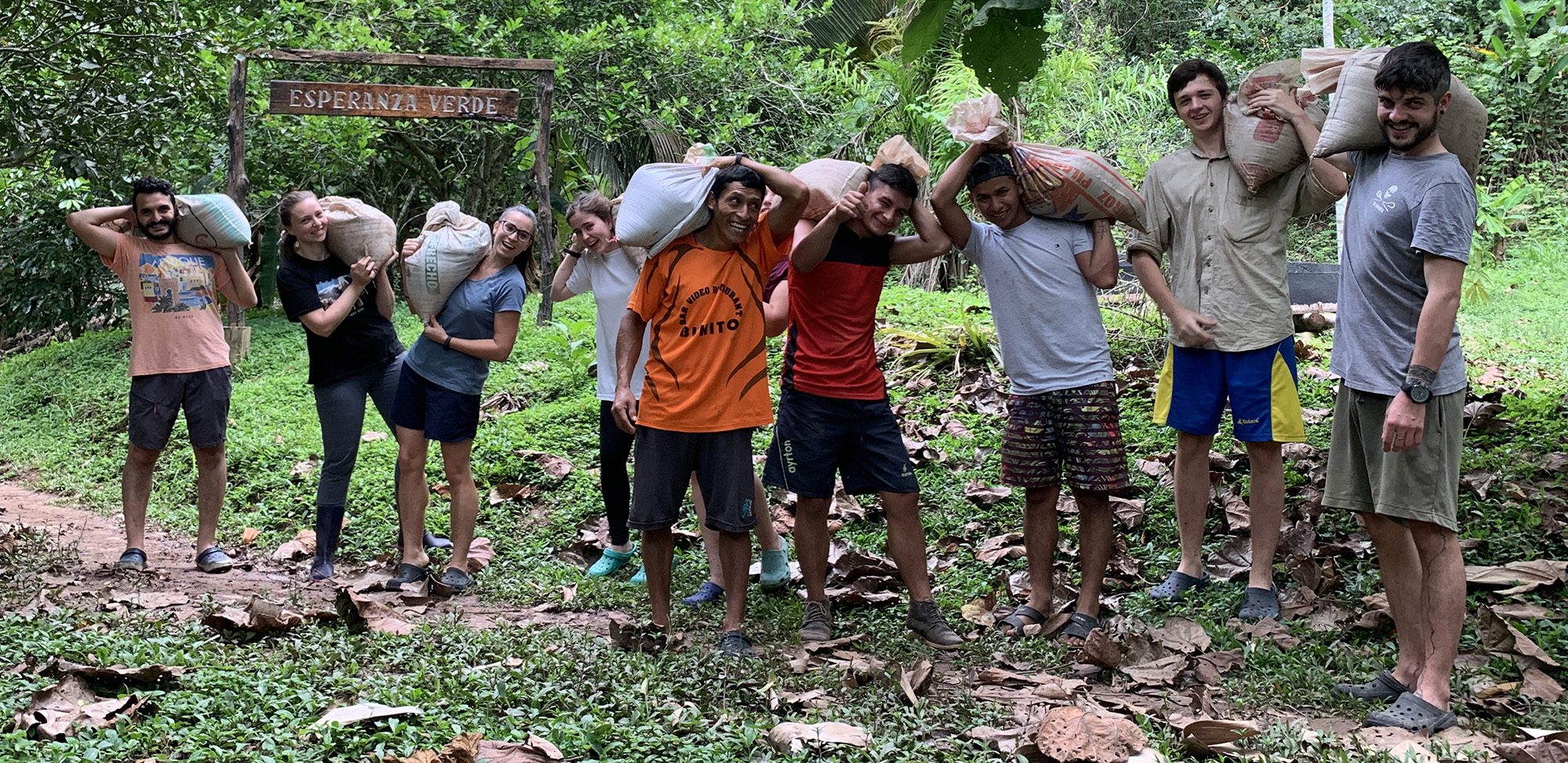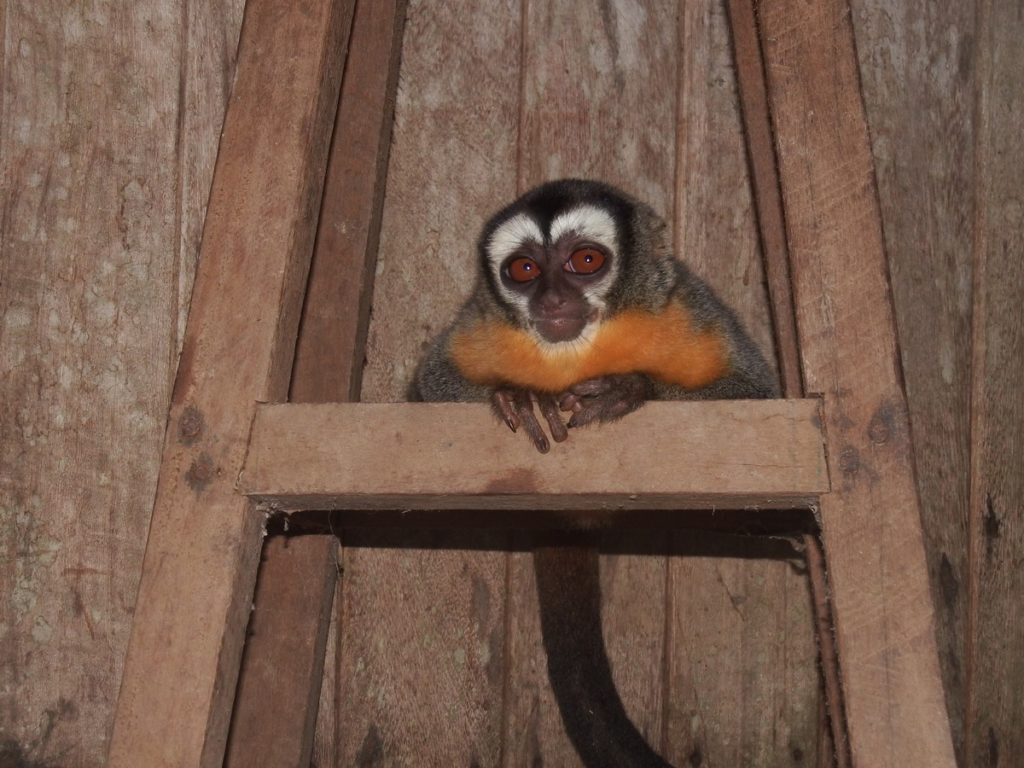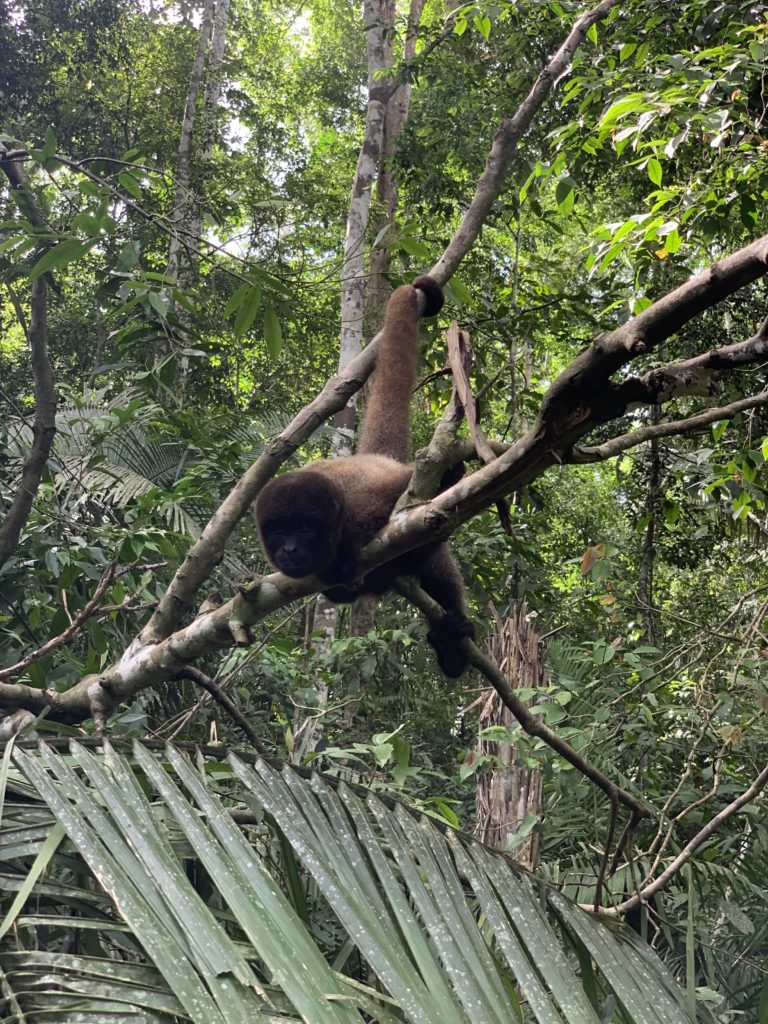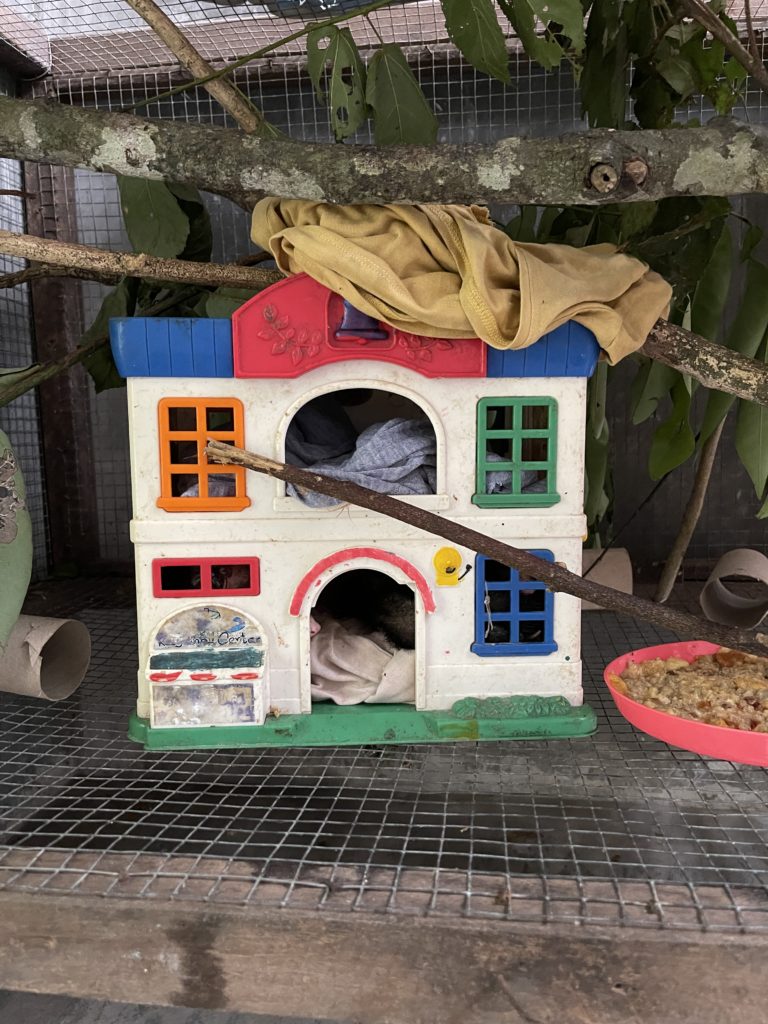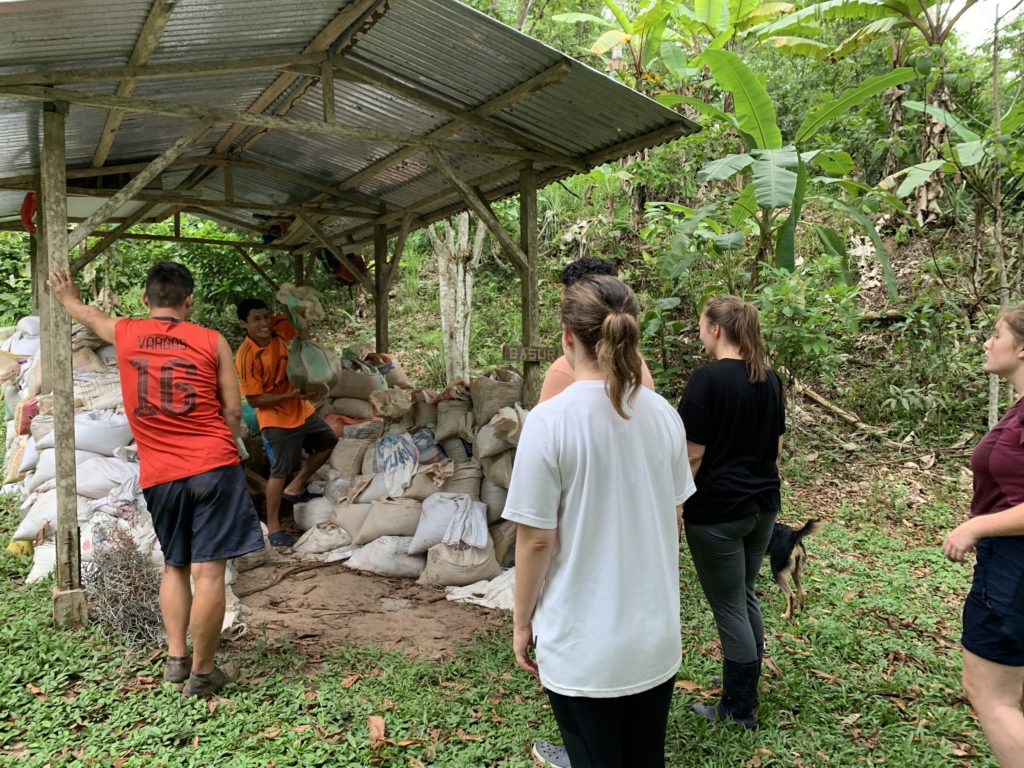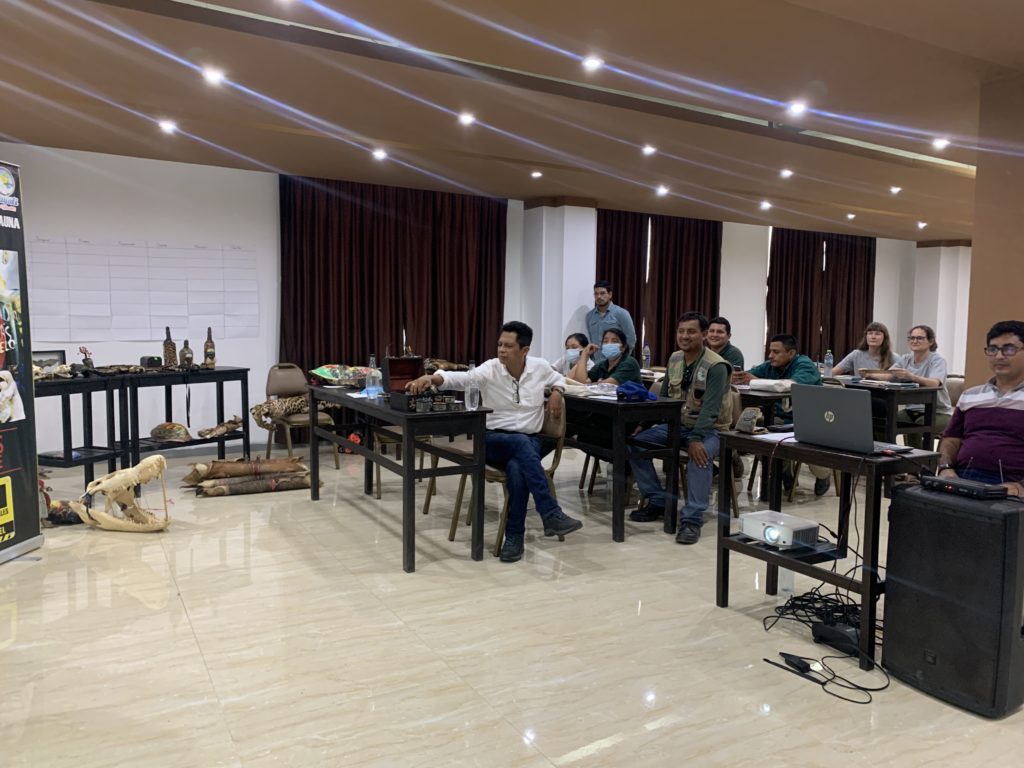The pandemic has created many problems worldwide, but here at Esperanza Verde there was calm. November was determined to shatter that calm and reintroduce the daily triumphs and trials that new animals and new volunteers bring.
The SUSTOAH once again proving invaluable with more animals passing through its doors than has become the ‘normal’. Keep reading to hear about the frequent highs and occasional lows that made November special at Esperanza Verde.
 Animals
Animals
November was a month for releasing animals. As every year the local Ministry of Flora and Fauna visit us for an inspection, giving us a great opportunity to release some animals that had received the necessary care and were determined fit for freedom again. Several yellow footed tortoises and a yellow spotted river turtle were ready. Releasing animals is always a volunteer favourite so all volunteers were on hand when these wonderful animals were released into and around the area of the small (sometimes not so small thanks to rainy season) stream that runs through Esperanza Verde.
The time had come for Moyo (adult male Humboldt’s woolly monkey) to make the shift from Lulu to the more spacious La Sapa enclosure joining Kamayo, the adult male woolly monkey, and two large headed capuchin monkeys, Yanamayo and Selda.
Moyo is now a different monkey, looking far more beautiful than he ever has been and more active than we have seen him in a very long time. Unfortunately, Moyo’s new splendour came at a price as it appears; he forgot he was not as large and strong as Kamayo, receiving a bite to his forearm that required a few stitches. La Sapa enclosures front cage does not allow enough distance to safely capture a monkey but a combination of Olivia’s patience and Douwe’s skill with a blow dart gun meant that Moyo was able to be separated, tranquilised and then moved with as little stress and danger to both monkey and humans as possible. Moyo spent just two weeks recovering in the SUSTOAH before being returned to La Sapa enclosure, where he found his place again in the hierarchy within the enclosure.

Rasu, juvenile male capuchin, during feeding time in Lulu enclosure 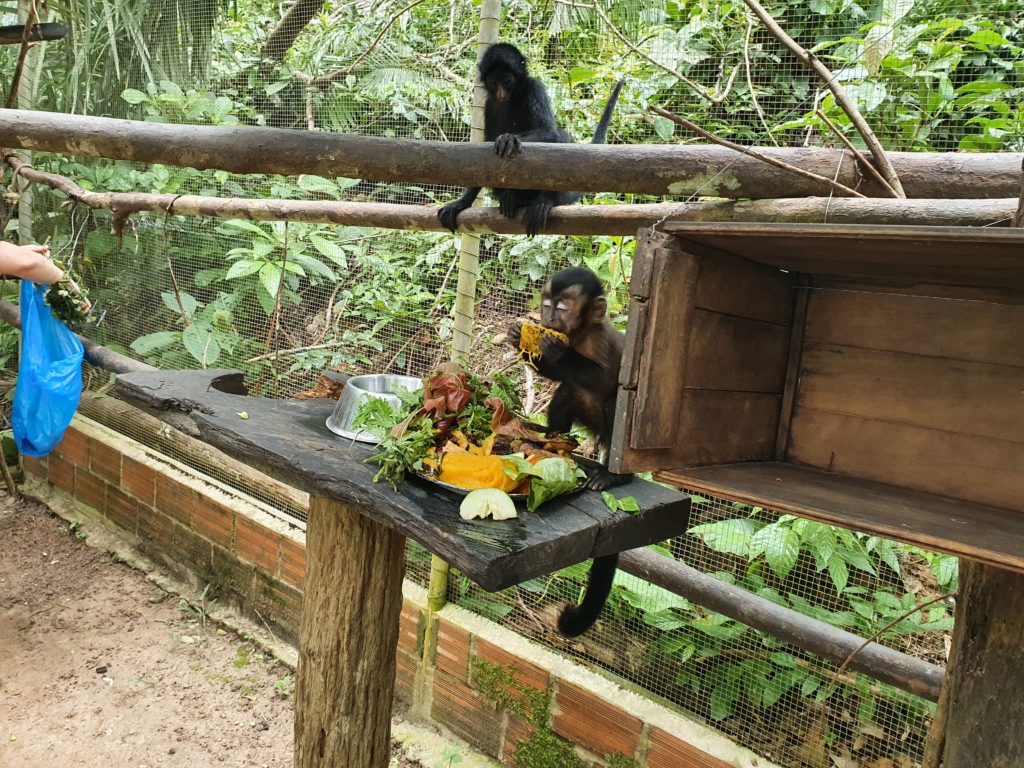
Rasu absolutely loving the mango 
Ashuke (male spider monkey) and Rasu (male large headed capuchin monkey) in Lulu cage 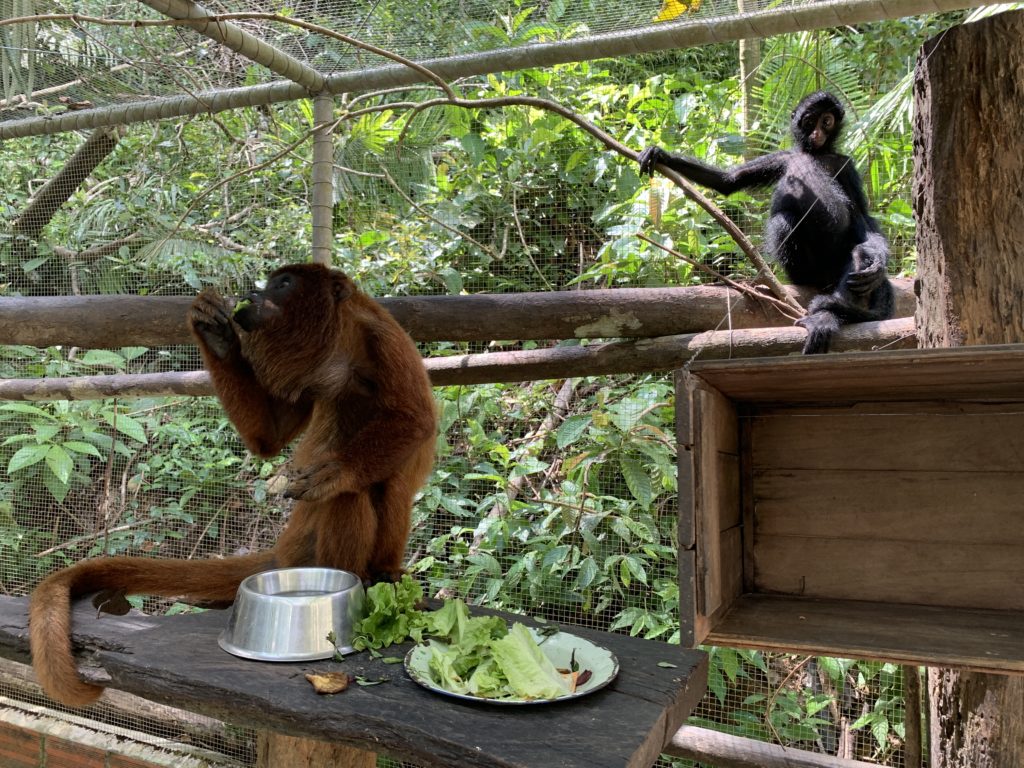
Ashuke the spider monkey and howler monkey Darwin in Lulu cage 
Male spider monkey Ashuke enjoying some lettuce in Lulu enclosure
Ashuke, the juvenile spider monkey and Rasu, a young large headed capuchin male, moved from the SUSTOAH into the outside Lulu enclosure with Darwin the howler monkey. The beauty of this enclosure is that it gives the opportunity for maximum exposure to the outside monkeys with the safety and security of wire mesh to confine them. Both monkeys will be released to join the outside troop in the next few weeks.
Gaia, the young female ocelot, made the big move from the family house to the newly completed Wayra enclosure (named after our first ocelot). Gaia is still young and in the wild would still be highly dependent on her mother. Unfortunately, being taken away too young and being raised by humans she will never learn sufficient hunting skills to be able to survive in the wild. So, for now we will compensate the loss of her mother by not applying the no-touch policy, and volunteers are able to interact with her directly. Of course, quickly she has become a volunteer favourite. As Gaia gets bigger and more unpredictable our “no touch” policy will come into force again, safeguarding both volunteers and Gaia from unnecessary stress and possible injury. Plans are already in progress for a new larger purpose-built feline enclosure encompassing residence for the two margay Grety and Diego as well as the two ocelots Gaia and Wayra.
Since his release, Punsho, the juvenile male South American coati was a real character to be aware of. Always keen to steal compost buckets or prove that the food you were carrying was really for him. Unfortunately, one morning Geyler found Punsho laying on top of one of the enclosure fences and not interacting, which is highly out of character. After being taken to the clinic Punsho’s demise was rapid and he passed away within the first ten minutes. A thorough necropsy revealed a few abnormalities but neither Douwe our team of consulting veterinarians were able to conclude a definitive reason for his death.
 SUST Animal Orphan Hospital
SUST Animal Orphan Hospital
SUSTOAH was where the majority of the action was this month, and the stitches in the arm of Moyo was just the beginning of what was to be an eventful month.
Payco the crab eating raccoon was again in need of treatment. Thankfully this time it was only a minor bite needing cleaning and antibiotics. Payco is making a great recovery in his old outside cage Pepe and we envision re-releasing Payco in the coming weeks.
Maru the Ma’s night monkey who is normally in residence outside the family house was caught and brought in for observation and tests as he was looking worse for wear and in need of some extra care. Although Maru was given the best diet possible and treated for parasites his condition continued to deteriorate. After nearly 3 weeks in the clinic Maru succumbed to Prosthenorchis Elegans as a worm perforated his intestinal wall. Maru was as comfortable as we could make him, yet he was not to be one of the success stories where we managed to win the ongoing battle against this parasite. Like all who have gone before him, Maru will be another character that is missed from the daily goings on.
Another monkey in the struggle against Prosthenorchis Elegans is Martin, a young adult male Humboldts woolly monkey. Martin continues his stay in SUSTOAH and although his condition is no longer deteriorating, it is a slow progress to seeing improvements. Our recent successes with Moyo and Yanamayo, the large headed capuchin, and the vitality they showed after treatment certainly boosts the belief that Martin is on the road to recovery and hopefully after regaining some condition can be released to join the other semi captive monkeys at Esperanza Verde.

Naka, female woolly monkey, managing to get food despite her broken arm 
Naka, her arm attached to her body to have it stay in place after being broken 
anchin (male woolly monkey with a broken leg) waiting for Lulu (female woolly monkey) to finish eating so he can get a bite! 
Panchin the woolly monkey with a broken leg in SUSTAOH
Woolly monkeys certainly dominated the ranks of animals within the SUSTOAH this month. Naka (adolescent female) and the recently released Panchin (juvenile male) entered both the clinic, having fallen high from a tree after ‘playing’ with one of the spider monkey males. Naka is suffering from a broken arm which is currently strapped to her body to ensure it heals in the correct position, and Panchin has a broken leg which we hope will heal sufficiently giving him the calm surrounding of the clinic. Panchin is already using his leg more each day, and is very eager to leave, as he shows us by complaining a lot. Naka has always been one of our more relaxed monkeys and currently spends most days just relaxing on a branch in her cage showing eagerness and liveliness when it is time for vitamins or feeding.
Lupa, an adult female Humboldts woolly monkey, who suffered from a miscarriage, was released after her appetite had returned and she appeared to be progressing well. Then after only a week she was reintroduced to the SUSTOAH because of her lethargy and changes in habits/personality. Now we are able to monitor her condition more closely and ascertain if she has indeed something physically wrong with her or if there is some other factor contributing.
The young male woolly monkey Yauri, who was encountered with a fever made a full recovery and was released to enjoy the company of the other monkeys and the freedom available to him.
Miyo the baby black spider monkey male continues to live in the SUSTOAH and being so young is a highlight for many as he requires a lot of attention and nurturing that would normally be left to other monkeys. After a few false starts, Miyo is now able to drink his milk unassisted from a dish, and is making progress daily in other independent activities. We envisage Miyo spending some time in an enclosure with other monkeys very soon, giving him an outlet for his limitless energy as well as a chance to socialise with other monkeys.
With the visit of the Ministry Asuki a young fledgling dusky headed parakeetarrived. His life started as a pet in a local family, but soon they noticed that even a small bird like this is not always easy to take care of. He is a bit skinny and will be staying in the clinic, receiving some extra vitamins and sufficient attention.
 New Animals
New Animals
Everybody ‘loves’ surprises, but some are easier to accept than others. While we already had a representative here, we received an unexpected visit from the same Ministry of Fauna and Flora, all of course occurring on an already busy day (both Naka and Payco were receiving their initial treatment). Thankfully Douwe and Olivia along with the new team of volunteers handled the extra pressure well, ensuring all necessary tasks continued as normal as well as checking and placing the new animals into their enclosures. With the SUSTOAH already full we were highly appreciative of the fact that the quarantine, generously funded by the foundation Jaap van de Graaf from The Netherlands, was completed.
Some animals made a very brief stay and were able to be released after a health assessment by the veterinarian of the Ministry, as well as by our professional team here at EV. Others will remain in quarantine until being placed into outside enclosures or enjoying the freedom of semi captivity within Esperanza Verde. Seeing one of the new monkeys (a young female howler) expel about fifteen 10-15 cm long worms, shows us the significance again of having a good quarantine protocol in place. This drastically reduces the risk of any of these parasites to find their way to our resident animals. It is not uncommon for animals coming from the illegal trade or form a life as a pet, to have parasites or other medical problems.
All new animals were either seized prior to being on sold into illegal trade, already pets, or displaced due to land redevelopment. In the first few days the following animals were given another chance at freedom and released into different locations of Esperanza Verde.
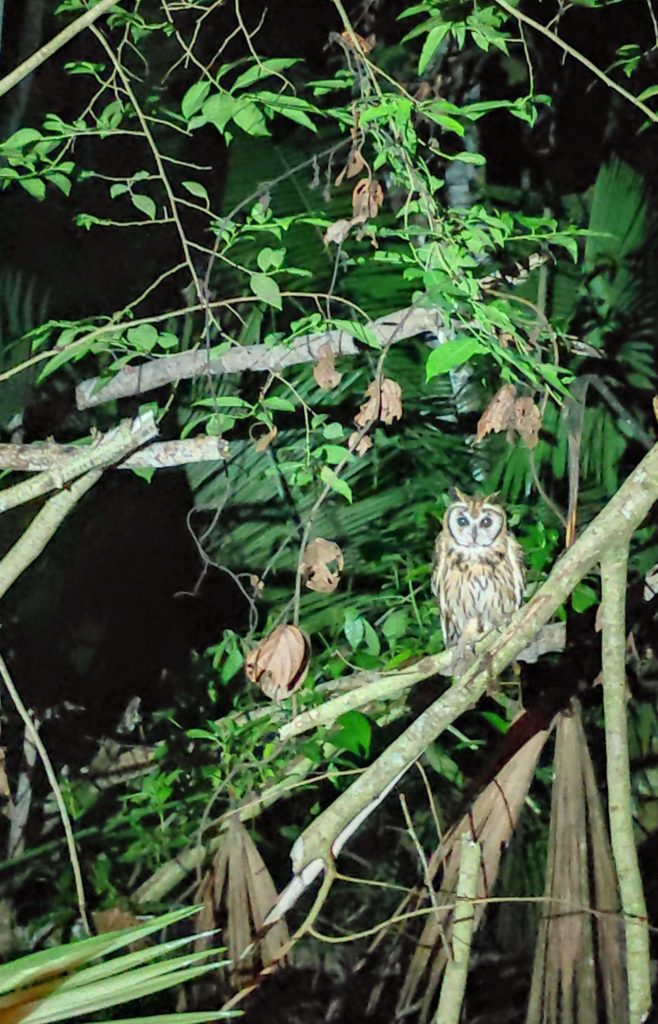
The owl sitting on a branch after being released 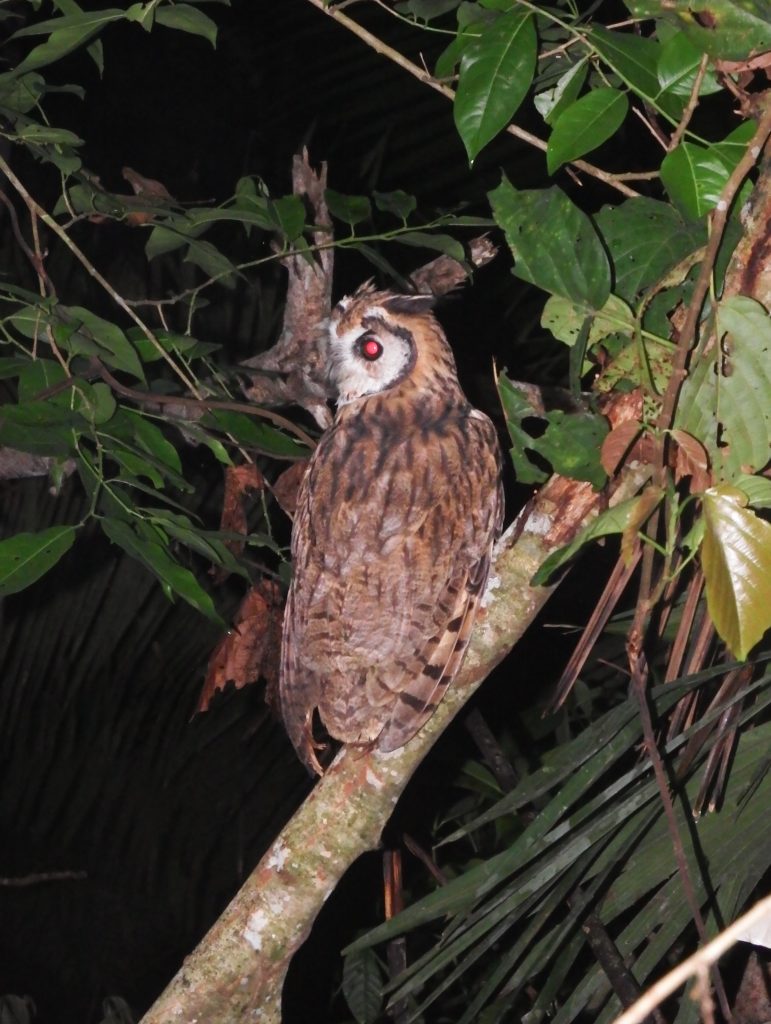
Release of Striped owl 
Releasing the two-toed sloth 
Jelle and Douwe ecouragin the two-toed sloth to go off and enjoy freedom 
Release of the pygmee anteater 
The female silky pygme anteater being released 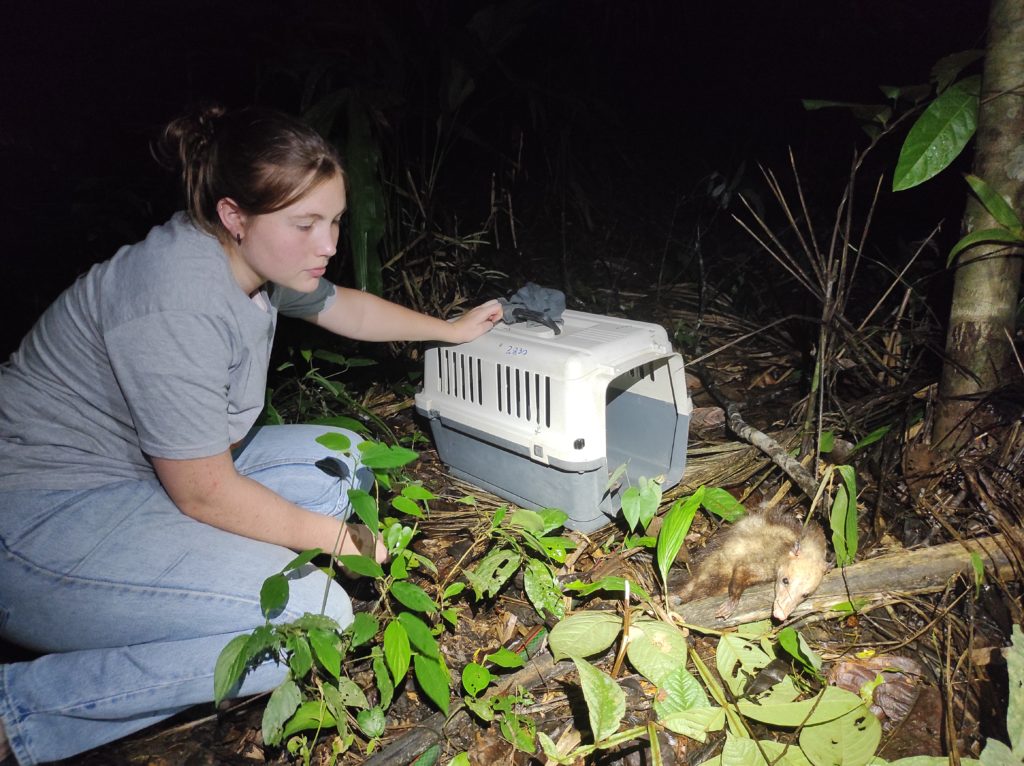
Volunteer Marion releasing the mama opposum with her two babies 
Volunteer Marion watching the release of the opposums
- A Striped owl
- A Two toed sloth
- An adult Pygmy anteater
- A mother Opossum with 2 babies.
The animals remaining in quarantine are:

Woolly monkeys Tasha and Keska waiting until howler monkey Maida has taken her share 
Parasites in the new female howler monkey Maida 
Howler monkey Maida and Keska the female woolly monkey enjoying some alfa-alfa leaves 
Female woolly monkeys Keska and Tasha eating together with the female howler monkey Maida
- A juvenile female Red Juala Howler monkey, named Maida.
- Two young female Humboldts woolly monkeys, named Tasha and Keska.
- A young male Kinkajou, named Yuno.
- 7 very young opossums and 1 juvenile opossum.
 Construction and other
Construction and other
Geyler spent the majority of this month working on his own land which normally leaves the burden of his work on Douwe. Fortunately, the two new workers handled the month in their stride completing the lion’s share of the renewal of the posts of the reptile enclosure and work also could begin on improving the entrance to our storage of food and tools, the Almacen.
As the rainy season approaches, the river will get higher, and beaches will be scarcer. Therefore, a lot of labour in these lasts months has been focused on getting sand for concrete for any foundations that could become necessary for any constructions in the coming months. It means hard manual labour; going by boat to a nearby beach, collecting sand by shovelling it in bags of roughly 25kg in weight, carrying and transporting by boat, and then carrying them all to the centre of Esperanza Verde.
 Volunteers
Volunteers
New volunteers continue to arrive, giving the long-term volunteers and assistants the opportunity for a well-earned holiday. We were fortunate enough to welcome Mark to the fold in November who is a Veterinarian from Egypt who is planning on spending the next year at Esperanza Verde.
November also saw Olivia and Alex attending a workshop in nearby Pucallpa. The workshop was to train people form the Ministry of Fauna and Flora, who are involved in the confiscation of wildlife, to improve their skills in recognition of species, as well as to train and teach about animal handling during the confiscation and care taking after. A very good initiative taken by the World Conservation Society.

